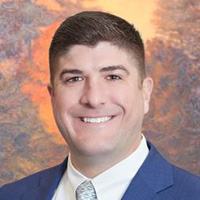Bonds Are Having a Rough Year. Here Are 3 Actions That Can Help
Rising interest rates have hurt bond prices. But these three steps can benefit investors worried about their portfolios and their retirement income.


During the past few weeks, several clients have asked the question, “Why are my bond investments losing money?” They were surprised to see the results of their bond portfolio over the last year.
I understand why investors are perplexed. The Bloomberg Barclays Aggregate Bond Index is down 8.9% in 2022 through May 31. It’s no secret inflation, high gasoline prices and the war in Ukraine are causing stock market volatility. However, most investors view bonds as the safe part of their portfolio. While they are generally less volatile than stocks, rising interest rates are causing bond yields to increase. When yields rise, the price of a bond will drop.
Here’s an example of how this works.
From just $107.88 $24.99 for Kiplinger Personal Finance
Become a smarter, better informed investor. Subscribe from just $107.88 $24.99, plus get up to 4 Special Issues

Sign up for Kiplinger’s Free Newsletters
Profit and prosper with the best of expert advice on investing, taxes, retirement, personal finance and more - straight to your e-mail.
Profit and prosper with the best of expert advice - straight to your e-mail.
Let’s say one year ago a person bought a $1,000 corporate bond from a company, and the bond yields 1% annually. One year later, interest rates have risen and the same company now issues new bonds for $1,000 with a yield of 2.5%. This makes the older bond less attractive. If the holder of the older bond wants to sell it, they would have to take a loss since any buyer would want a 2.5% yield.
As the Federal Reserve moves to fight inflation, interest rates are expected to continue to climb for the next several months and possibly into 2023.
While there are no magic bullets to quickly reverse the performance of an investor’s bond portfolio, here are three moves for investors to consider.
Try a Different Bond-Buying Strategy
When the Federal Reserve cut interest rates to near 0% overnight two years ago to offset the impact of the COVID-19 crisis, we advocated investing in bond funds and decreased our investment in individual bonds where it made sense. We did this because the bonds in those funds were already providing higher yields than if we had purchased individual bonds.
Now, as rates have started to rise, the reverse could make sense. Investors may look to replace these bond funds with individual bonds, which have a better yield since the funds now hold bonds with lower yields.
As part of this strategy, investors can look to purchase short-dated bonds that will mature within a few years. While bonds with longer maturity dates – such as 10+ years – often have higher yields, the increase isn’t all that much (because of what is called a flat yield curve). For investors expecting rates to rise, the longer-dated bonds will be hit hardest if rates do rise.
For those investors who expect rates to hold or fall, or those who tend to pull a low percentage of their portfolio for living expenses, it could make sense to go out a little further than a few years and “lock in” the yields that we are seeing now, despite them not being much higher than the short-term rates. While the price of the bond could still go down if rates rise, the investor is locked in to the yield at the time of purchase.
Consider Building a Bond Ladder
The second strategy we used was a bond ladder to help provide a steady performance over a longer period. Think of each bond as one of the rungs on a ladder. Once a bond matures, its proceeds are reinvested in a new bond that has a higher yield.
Here’s a hypothetical example of the potential benefit of the bond ladder for an individual investor:
A retiree may want to hold seven to 10 years of their cash flow needs in safe assets. To do this they can use a mix of bonds and cash. If the retiree spends $200,000 annually, they may look to target between $1.4 million and $2 million in this bucket.
To achieve this goal, purchasing individual, shorter-term bonds can maintain flexibility to invest in attractive yields. As the short-term bonds mature, it may be possible to reinvest with longer-dated bonds with better yields if rates have risen. This approach enables the retiree to live off these safe assets for their targeted time period, without needing to dip into the rest of their portfolio, which consists of stocks or other investments.
As a result of this strategy, the shorter-term volatility of the equity markets often means much less to the retiree. While there is both an art and a science to managing the balance of increasing the portfolio value and meeting the retiree’s future needs, it is comforting to many retirees to know that, in a down market, it could be several years before they even need to look to that part of their portfolio for living expenses.
Know that Bond Losses May Provide a Tax Benefit
As investors begin the process of selling bond funds, there is one benefit. Most bond funds purchased in the last five years have likely declined in value. Investors holding them in a taxable account, the investor can use the loss from the sale to offset part of their tax bill. This is called tax-loss harvesting.
By selling an investment that is a loss, a person can reduce their capital gains taxes and potentially offset up to $3,000 in ordinary income. The money from the sale of the bond fund is then reinvested in a different security – in this case, an individual bond – that meets the investor’s financial goals. Therefore, an investor can not only get a tax benefit, they can also lock in a better yield – a win-win.
Despite losses in 2022’s first quarter, bonds have an important role to play in nearly every investor’s portfolio. While each person has different needs and goals, they can work with their adviser to develop a bond strategy generating steady returns over the long term, providing the security any investor needs.
Profit and prosper with the best of Kiplinger's advice on investing, taxes, retirement, personal finance and much more. Delivered daily. Enter your email in the box and click Sign Me Up.

Matt Schaller brings more than a decade of experience in the financial services industry to his role as an adviser with Compardo, Wienstroer, Conrad & Janes (CWCJ) Team at Moneta, a Top 10 Registered Investment Advisory Firm, according to Barron’s. Matt is both a Chartered Financial Analyst® Charterholder and a CERTIFIED FINANCIAL PLANNER™ Professional. His extensive background in client service, coupled with his previous experience as an investment research analyst, offers a unique lens for clients' investment decisions.
-
 The Santa Claus Rally Officially Begins: Stock Market Today
The Santa Claus Rally Officially Begins: Stock Market TodayThe Santa Claus Rally is officially on as of Wednesday's closing bell, and initial returns are positive.
-
 How to Leave Different Amounts to Adult Children Without Causing a Rift
How to Leave Different Amounts to Adult Children Without Causing a RiftHere’s how to leave different amounts to adult children without causing a family rift.
-
 My Retirement Learning Curve, 1 Year In
My Retirement Learning Curve, 1 Year InA retiree checks in with what they wish they knew early on and what they've changed about their plan one year in.
-
 Introducing Your CD's Edgier Cousin: The Market-Linked CD
Introducing Your CD's Edgier Cousin: The Market-Linked CDTraditional CDs are a safe option for savers, but they don't always beat inflation. Should you try their counterparts, market-linked CDs, for better returns?
-
 How to Protect Yourself and Others From a Troubled Adult Child: A Lesson from Real Life
How to Protect Yourself and Others From a Troubled Adult Child: A Lesson from Real LifeThis case of a violent adult son whose parents are in denial is an example of the extreme risks some parents face if they neglect essential safety precautions.
-
 To Build Client Relationships That Last, Embrace Simplicity
To Build Client Relationships That Last, Embrace SimplicityAs more automation becomes the norm, you can distinguish yourself as a financial professional by using technology wisely and prioritizing personal touches.
-
 Client Demand Is Forcing Financial Advisers to Specialize: How to Deliver
Client Demand Is Forcing Financial Advisers to Specialize: How to DeliverThe complexity of wealthy clients' needs — combined with AI and consumer demand — suggests the future of financial planning belongs to specialized experts.
-
 A Financial Planner Takes a Deep Dive Into How Charitable Trusts Benefit You and Your Favorite Charities
A Financial Planner Takes a Deep Dive Into How Charitable Trusts Benefit You and Your Favorite CharitiesThese dual-purpose tools let affluent families combine philanthropic goals with advanced tax planning to generate income, reduce estate taxes and preserve wealth.
-
 A 5-Step Plan for Parents of Children With Special Needs, From a Financial Planner
A 5-Step Plan for Parents of Children With Special Needs, From a Financial PlannerGuidance to help ensure your child's needs are supported now and in the future – while protecting your own financial well-being.
-
 How Financial Advisers Can Best Help Widowed and Divorced Women
How Financial Advisers Can Best Help Widowed and Divorced WomenApproaching conversations with empathy and compassion is key to helping them find clarity and confidence and take control of their financial futures.
-
 A Wealth Adviser Explains: 4 Times I'd Give the Green Light for a Roth Conversion (and 4 Times I'd Say It's a No-Go)
A Wealth Adviser Explains: 4 Times I'd Give the Green Light for a Roth Conversion (and 4 Times I'd Say It's a No-Go)Roth conversions should never be done on a whim — they're a product of careful timing and long-term tax considerations. So how can you tell whether to go ahead?